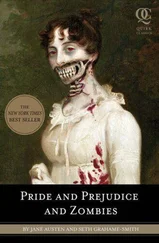When Abe reached the question of how one becomes a vampire, Henry paused.
“I shall tell you how I came to be one.”
V
Abe committed the following to his journal on August 30th, 1825, shortly after his return to Little Pigeon Creek.
What follows is the story exactly as Henry related it to me. I have neither embellished, nor withheld, nor verified any part of it. I merely duplicate it here so that some record of it exists. “On 22nd July, in the year 1587,” Henry began, “three ships carrying 117 English souls landed on northern Roanoke Island, in what is today called North Carolina.”
Among this teeming mass of men, women, and children was a twenty-three-year-old blacksmith’s apprentice named Henry O. Sturges, average in height and build, with long, dark hair to the middle of his back. He was joined by his new wife, Edeva.
“She was but a day younger and an inch shorter than I, with hair of the finest flaxen and eyes a strange shade of brown. There has never been a more delicate, a more fetching creature in all the annals of time.”
They had just experienced a harrowing voyage, one plagued by unseasonably bad weather and uncommonly bad luck. While there was nothing unusual about sickness and death on an Atlantic crossing (sixteenth-century ships were typically moldy, rat-infested breeding grounds for any number of air- or food-borne illnesses), the accidental demise of two people on two separate occasions was ominous enough to raise alarm.
Both deaths occurred aboard the Lyon , the largest of the three-vessel caravan, and the one personally captained by John White. White, a forty-seven-year-old artist, was handpicked by Sir Walter Raleigh for the job of establishing a permanent English presence in the New World. He’d been part of the first attempt to colonize Roanoke two years earlier—an attempt that failed when the colonists, all men, ran desperately short of supplies and hitched a ride back to England with Sir Francis Drake, who, as fate would have it, had decided to anchor nearby during a break from raiding Spanish ships.
“This time ’round,” Henry said, “Raleigh’s plan was more ambitious. Instead of brusque sailors, he sent young families. Families that would put down roots. Produce children. Build churches and schoolhouses. It was his opportunity to build ‘a new England in the New World.’ For Edeva and me, it was an opportunity to leave a home that held little in the way of happiness. All told we were ninety men, nine children, and seventeen women, including John White’s own daughter, Eleanor Dare.”
Eleanor, who was eight months pregnant, was joined by her husband, Ananias, aboard the Lyon . She was an “uncommonly pretty” twenty-four-year-old, with a shock of red hair and freckled face. One can only imagine the discomfort she felt as the 120-ton ship pitched about in the oppressive July heat—heat that turned the innards of the ships into giant steam ovens.
“Even some of the surest-footed sailors found themselves green-faced and bent over the railings when the seas kicked up and the sun beat down on us.”
The first of the two deaths occurred on Sunday, May 24th, a little more than two weeks after the colonists set sail from Plymouth. A ship’s mate named Blum (or Bloom; Henry never learned the correct spelling) had been in the crow’s nest at night, charged with keeping a sharp eye out for distant silhouettes on the star-filled horizon. Spanish carracks—with a reputation for attacking and pillaging English ships—were a very real threat. Shortly after midnight, the ship’s pilot, Simon Ferdinando (who’d already gained fame through previous expeditions to Maine and Virginia), recalled hearing a “crash” on the main deck. Moments later, he found himself standing over the lifeless body of Mr. Blum—whose neck was severely broken.
“Mr. Ferdinando thought it strange that an experienced sailor—particularly one who’d sworn off drink—could’ve taken such a fall in calm seas. But such was life on the Atlantic. Accidents happened. Other than a few prayers for the unfortunate man’s soul, little was said about Mr. Blum among the passengers and crew.”
Captain White recorded the matter rather succinctly and dispassionately in his log: Man fell from crowe’s nest. Deade. Throwne overboarde.
“Had that been the only incident during our crossing, we might have counted ourselves fortunate. But our nerves were tested again on Tuesday, June 30th—when Elizabeth Barrington vanished into the night forever.”
Elizabeth, an almost comically short, curly-haired girl of sixteen, had been literally dragged aboard by her father and several shipmates, kicking, screaming, and biting the whole way. To her, the Lyon was a prison ship.
Months earlier, she had fallen hard for a young clerk in her father’s law practice. Knowing that the match would never warrant approval, the two young lovers carried on a secret affair, the discovery of which caused a minor sensation in the Inns of Court and severely damaged the reputation of her father among his fellow solicitors. Embarrassed, Mr. Barrington seized the opportunity to start a new life across the Atlantic, and dragged his insolent daughter along for good measure.
“That Tuesday, the weather grew ever violent as our caravan sailed into a wall of storm clouds. By nightfall, all but a few deckhands had retreated below to escape the pounding wind and rain. The ship was tossed so severely that Captain White ordered all candles snuffed, for fear that the waves could knock one over and start a fire. With Edeva in my arms, I huddled in total darkness below deck—felt the dizzying motion of the ship; heard the groans of wooden planks and fellow passengers being sick. I know that Elizabeth Barrington had been there with us when the lights went out. I had seen her myself. But she was not there in the morning.”
The storm had passed, and the sun had returned to its oppressive perch. Because Elizabeth often kept to herself below, it wasn’t until midmorning that anyone noticed her absence. Passengers called her name but received no answer. A full search of the ship turned up nothing. A second search, which included bags of flour being emptied and barrels of gunpowder sifted through, was likewise fruitless. She was gone. Captain White made another succinct and dispassionate entry in his log: Girle fell overboarde in a storme. Deade.
“Privately, we all knew that the unhappy girl had taken her own life. That she had leapt into the sea and drowned. Prayers were said for her soul (though we knew it to be condemned to hell—suicide being an unforgivable sin in the eyes of God).”
The last three weeks of their voyage were free of further accidents and blessed with better weather. Even so, the sight of dry land was an especially welcome one. The colonists set about felling trees, rebuilding abandoned shelters, planting crops, and making contact with the natives—particularly the Croatoan, who’d welcomed the English in the past. But this time their truce proved short-lived. Exactly one week after the first of John White’s ships landed on Roanoke Island, one of his colonists, George Howe, was found facedown in the shallow waters of Albemarle Sound. He’d been fishing alone when a group of “savages” took him by surprise. White pieced the attack together based on the evidence at the scene. From his log:
These Savages being secretly hidden among high reedes, where oftentimes they find the Deere asleep, and so kill them, espied our man wading in the water alone, almost naked, without any weapon, save only a smal forked sticke, catching Crabs therewithal, and also being strayed two miles from his company, and shot at him in the water, where they gave him sixteen wounds with their arrowes: and after they had slaine him with their wooden swords, they beat his head in pieces, and fled over the water.
Читать дальше












